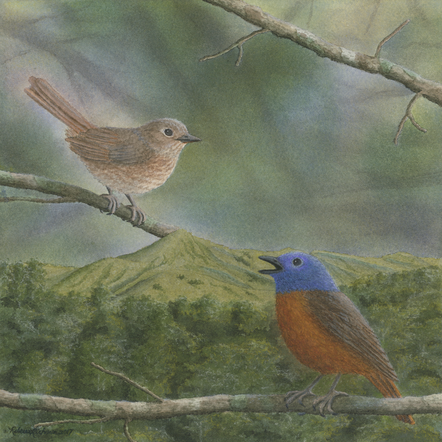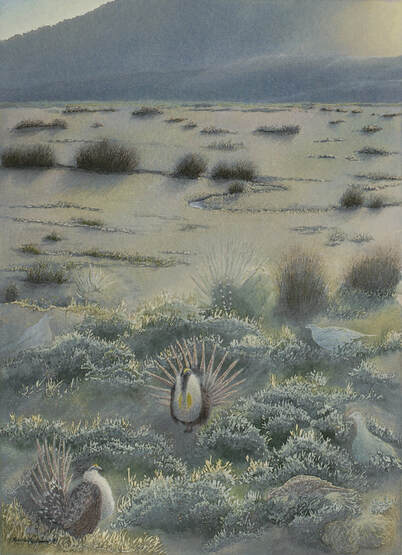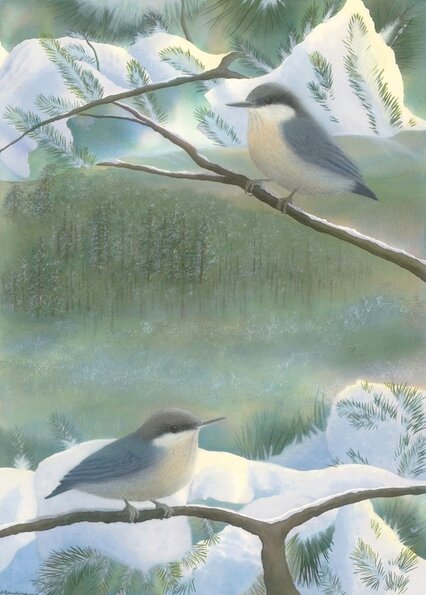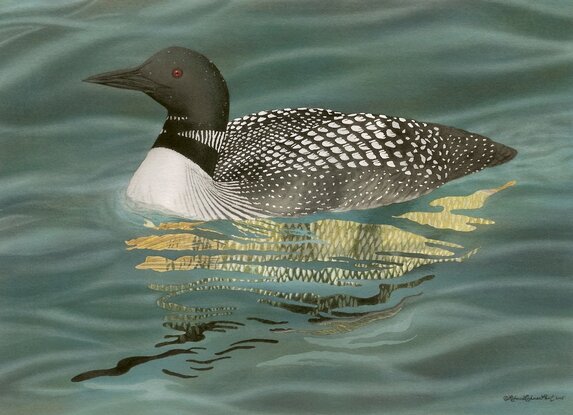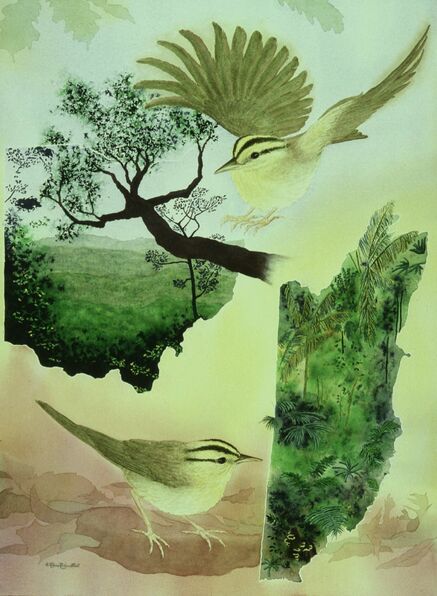Feathers
Click on each image to enlarge.
The Amber Mountain Rock-thrush is on the IUCN's red list and has been found only in Madagascar's Amber Mountain massif. The bird's population is estimated to be less than 5,000 due to habitat loss and deforestation. As you view the image, feel the optimism as the brilliantly colored male sings to his mate with hope for a bright future. We can restore balance in our natural world! Yes we can!
See Print
See Print
The Ridgway's Hawk is on IUCN's red list with an estimated population of only 300 birds left in the world. Dr. David Anderson is the director at The Peregrine Fund and he is working with other dedicated scientists, staff and volunteers to save these amazing birds with support from Morris Animal Foundation, the global leader in advancing science to help animals live healthier lives.
Ridgway's hawks are now only found in isolated areas including Los Haitises National Park in the Dominican Republic, one of the bird's last strongholds due to habitat loss, human disturbance, and botfly infestation. If you look closely, the beautiful islands in this national park are supporting the nest in my image as a symbol of how important this area is to the hawks.
See Print
Ridgway's hawks are now only found in isolated areas including Los Haitises National Park in the Dominican Republic, one of the bird's last strongholds due to habitat loss, human disturbance, and botfly infestation. If you look closely, the beautiful islands in this national park are supporting the nest in my image as a symbol of how important this area is to the hawks.
See Print
It was still pitch black outside and I was doing my best to stay warm. The sun finally began to peek over the ridge. The light created sparkles of color on the dew-covered sage. Off in the distance, I thought I heard the mating call, and then I was able to see them through the scope! So exciting!
I signed up for a field trip with Sisk-a-dee, an organization focused on protecting the endangered Gunnison sage grouse and its habitat. “Sisk-a-dee” is a Shoshone word for the bird which is a Native American symbol for “the rhythm of life”. Today, most sage grouse populations are in decline due to many factors, including loss of habitat and invasive species introduction.
As you view this painting, see the two males in their elaborate courtship dance to win over the beautiful hen nearby. See five more grouse who are one with the sagebrush forest. Let’s preserve this special habitat and keep huge swaths of wild places…wild; in balance and harmony, and in tune with the rhythm of life.
See Original ~ See Print
I signed up for a field trip with Sisk-a-dee, an organization focused on protecting the endangered Gunnison sage grouse and its habitat. “Sisk-a-dee” is a Shoshone word for the bird which is a Native American symbol for “the rhythm of life”. Today, most sage grouse populations are in decline due to many factors, including loss of habitat and invasive species introduction.
As you view this painting, see the two males in their elaborate courtship dance to win over the beautiful hen nearby. See five more grouse who are one with the sagebrush forest. Let’s preserve this special habitat and keep huge swaths of wild places…wild; in balance and harmony, and in tune with the rhythm of life.
See Original ~ See Print
Pygmy nuthatches are tiny, communal songbirds that flit from branch to branch with boundless happy energy. I've enjoyed hours watching them and listening to their cute “rubber-ducky” calls. Pygmies breed in large extended-family groups and need mature pine forests to successfully nest. During cold winters here in the West, these little birds even roost together to stay warm. In this painting, I highlight the connection of mature forests to healthy populations of songbirds. Pygmies, once common, face challenges today in places like Colorado where I live because of heavy land use alteration and forest clearing. Let's keep our mature pine forests flourishing to ensure that these adorable songbirds have a bright, beautiful future!
See Print
See Print
Common loons are the subject of critical research involving mercury. They are important biological indicators of the health of our northern forests and aquatic systems. In this painting, I bring attention to the connection of loons to the water and fish on which they depend. As you look closely at the reflection on the water, you see yellow perch, one of the bird's primary food sources. Loon populations reflect the viability of their environments and these relationships are key. Please join me in celebrating our beloved loons!
See Print
See Print
As you view this painting, see the relationship between the Bicknell's thrush and the high alpine forests of the Northeast. Instead of being impacted by acid deposition and mercury pollution through fog and precipitation, the cloud moisture should be clean and pure in this bird's mountain top home. A male thrush looks on from his red spruce perch and sings, looking forward to a bright future. Let's focus on clean air and water, and viable populations of Bicknell's thrush. Let's recreate the natural balance for people and all creatures on earth.
See Print
See Print
This painting was born on a frigid, January day at the Highlands Nature Sanctuary where my sentry for the hike was a very vocal blue jay. My new friend followed me everywhere and brought such a sense of wonder!
See Print
See Print
Worm-eating warblers migrate great distances to nest and raise their young in places like Ohio. These birds spend the winter in lush tropical forests found in places such as Belize. Alive in this painting, connection of place is key.
See Print
See Print
See the world through a songbird's eye; a world filled with oak trees, wild lupine, plains puccoon, and karner blue butterflies.
Print not available
Print not available

